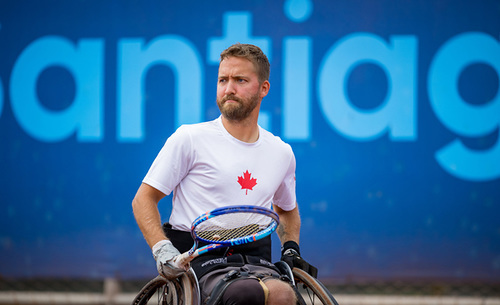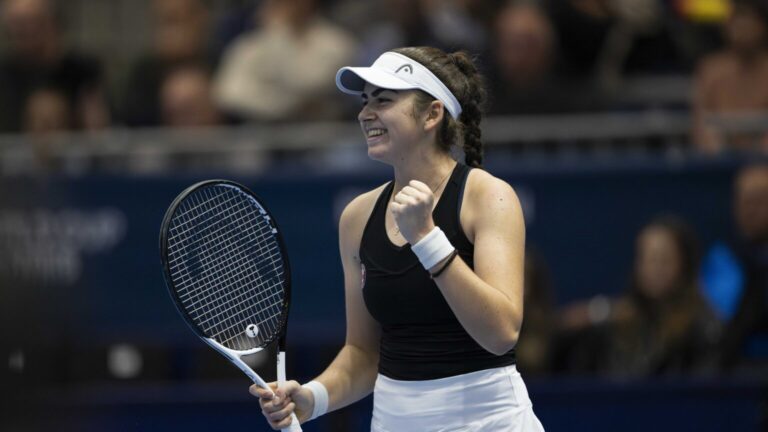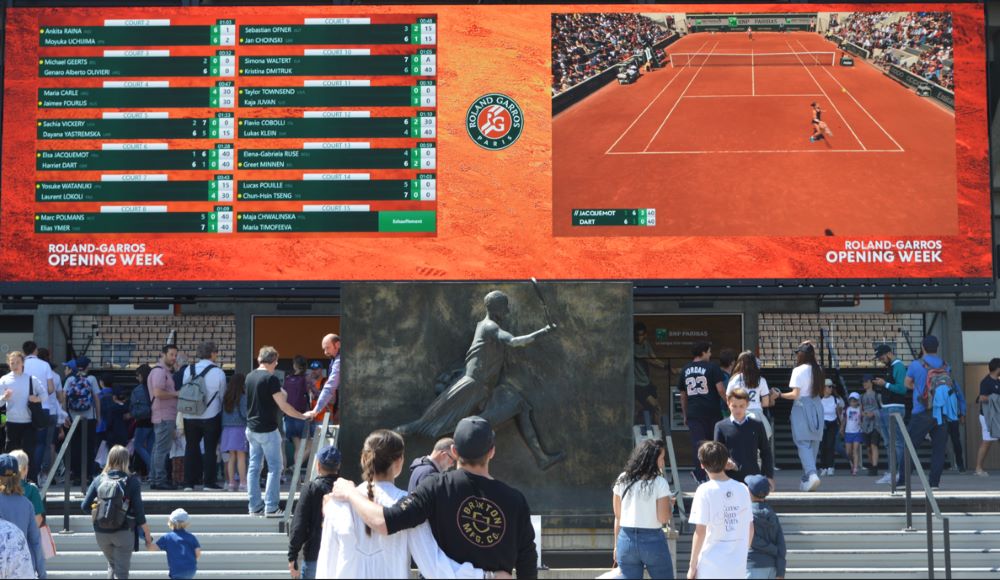
Maybe it all originates with the glorious Burnt Sienna colour of the terre battue, but so many things are done with panache at Roland Garros, giving it a singular status among the Grand Slam tournaments.
Above is a picture of the Suzanne Lenglen statue outside the stadium bearing her name. She was the grande dame of women’s tennis in the late 1910s into the 1920s. The relocating of Wimbledon to Church Road in 1922 can be traced to the demand for a larger stadium created by crowds desperate to see in person the balletic, athletic and theatrical Frenchwoman.
The women’s game has come a long way since Suzanne but there’s still an argument to be made that she was the greatest ever if impact on the sports-world and distinctiveness of style are among the main criteria.
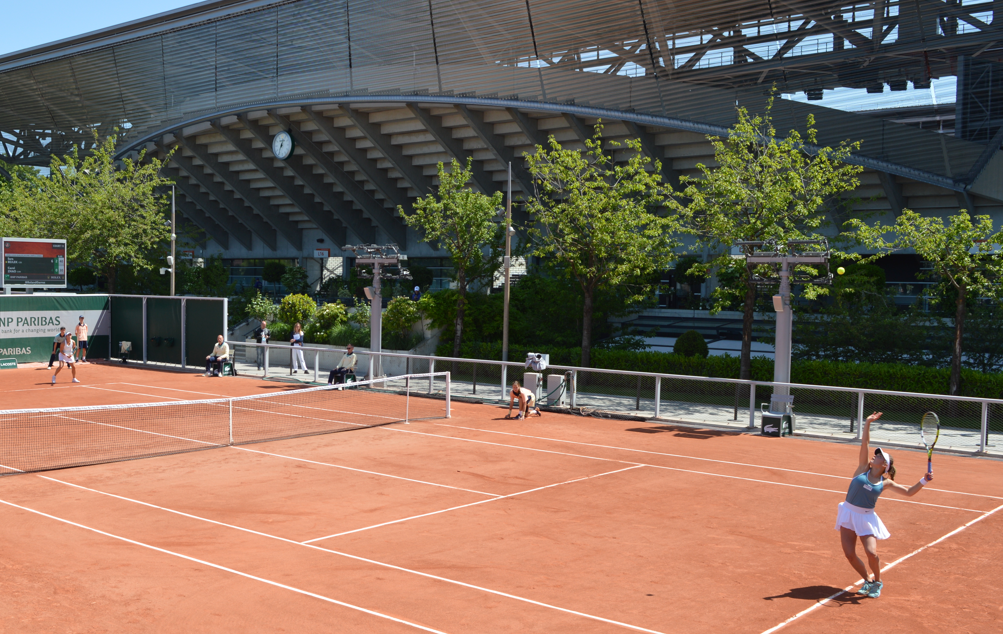
On Court No. 11 behind Court Suzanne Lenglen on Wednesday, things did not go well for Carol Zhao against Sara Bejlek (serving above) of the Czech Republic.
The 17-year-old took a quick 4-1 lead in the opening set but Zhao was able to close to 4-5 with a chance of evening the set with the score standing at 30-all in the 10th game. But a missed volley into an open court and a double fault and Bejlek had wrapped up the first set.
An energetic lefthander, she took a 3-0 lead in the second set before finishing off the hour and seven-minute match 6-4, 6-1.
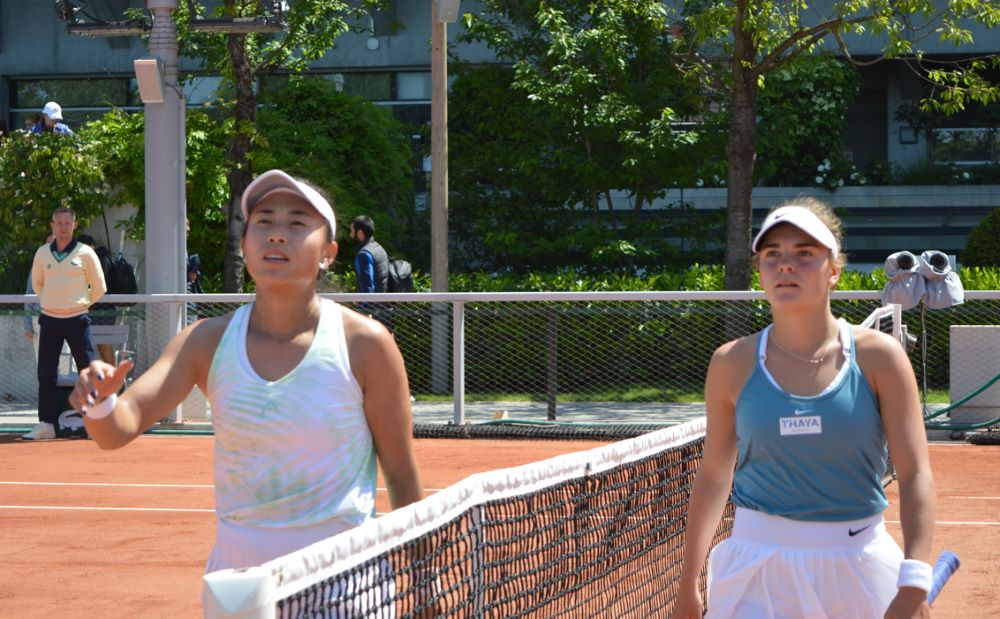
Bejlek is only 5-foot-1½ but what she lacks in size she makes for in her movement, moxie and what she has called “being strong in the head.”
She’s not at all like the taller 17-year-old who defeated Katherine Sebov on Tuesday with a power game based in heavy ground strokes. That was Petra Marcinko of Croatia. Bejlek is more of a grinder.
The No. 177-ranked Zhao has to regret not being able to find anything near her best game on Wednesday. She had nine winners and 23 unforced errors to 20 winners and 15 unforced errors for Bejlek, who won the Czech National junior (under-18) title at 14. She is now in the third round of qualifying trying to reach her third Grand Slam main draw in a row after success in both the 2022 US Open and 2023 Australian Open qualies.
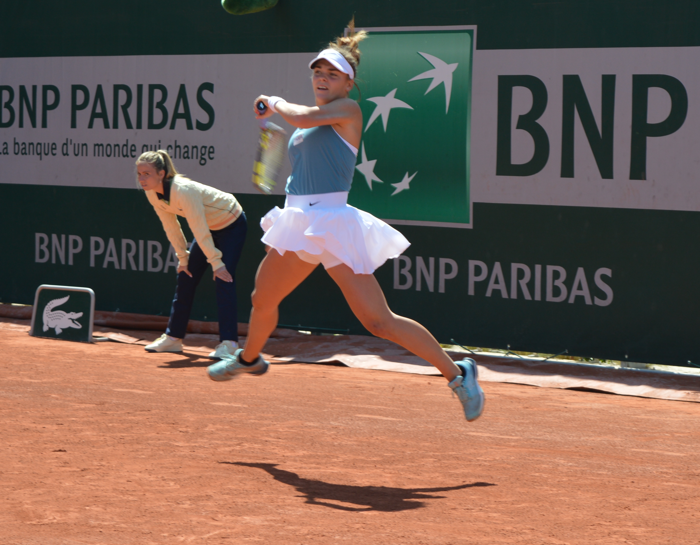
Bejlek was personable in a brief interview in English after the match saying, “I’m really happy because I was feeling good from the start of the day. I played good and, of course, I had a little bit of luck. We’ll see tomorrow how it will go.” In the final round she plays a Slovak rival, No. 136 ranked Victoria Hruncakova, 25.
THE DRAW DRAWS CLOSER
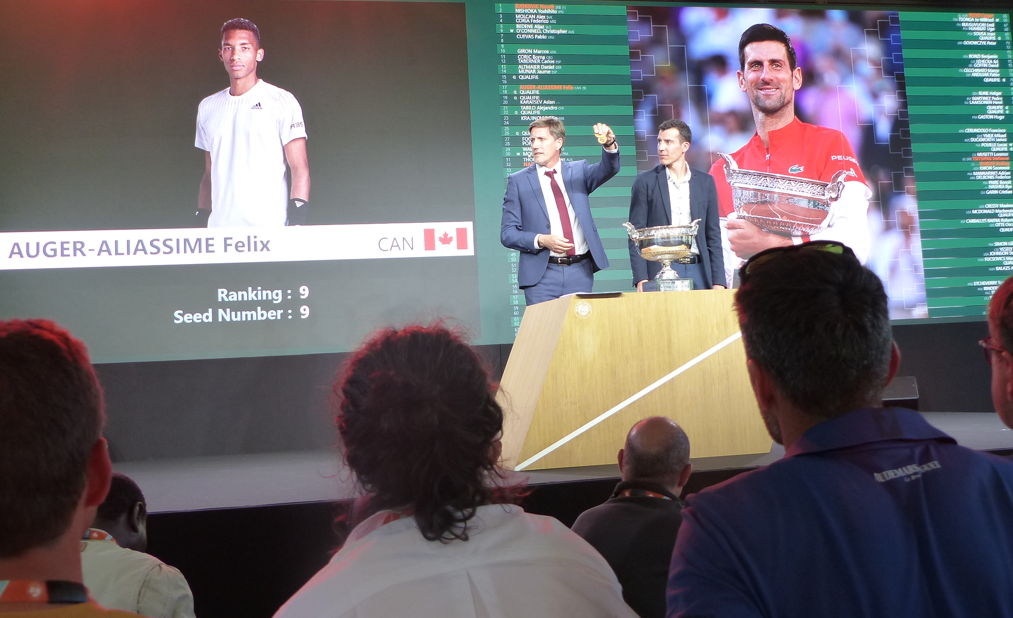
The destiny of the players in the 2023 French Open comes into tighter focus at 2 p.m. on Thursday (8 a.m. ET) when the main draws ceremony takes place at L’Orangerie, a stately reception hall located near the site’s Court Simonne-Mathieu.
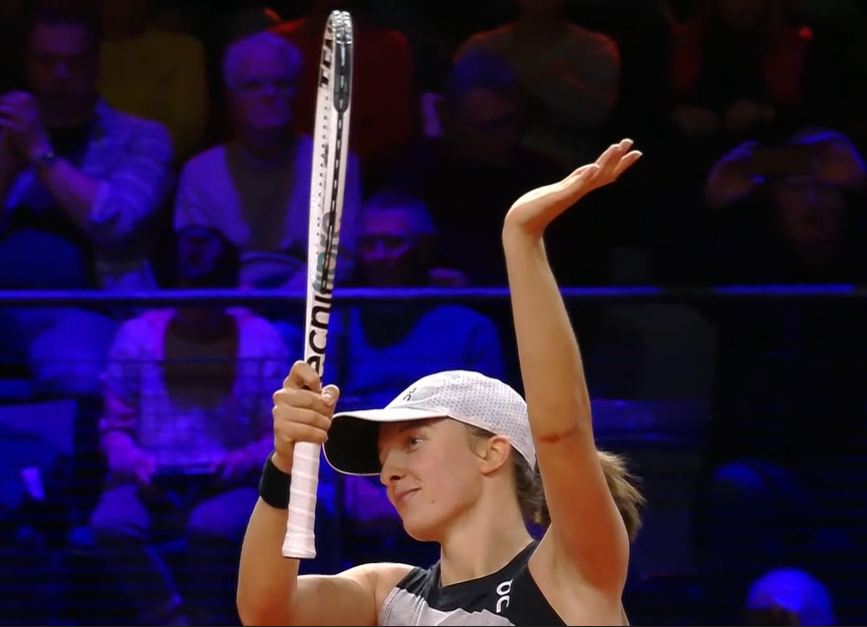
Iga Swiatek, the defending champion, and Carlos Alcaraz will be the top seeds.
From the Canadian standpoint, there will be three women in the field – No. 41-ranked Bianca Andreescu, No. 51 Leylah Fernandez and No. 79 Rebecca Marino. The main-draw men are No. 10 Félix Auger-Aliassime and No. 31 Denis Shapovalov – and both will be seeded.
The unseeded status of Andreescu and Fernandez will add an element of drama and anticipation to the women’s draw because both are widely perceived to be better than their current rankings and thus a danger to anyone who might meet them early in the event. Andreescu, the 2019 US Open champion, and Fernandez, the 2021 US Open finalist, have a recent pedigree unrivalled by most unseeded women.
Possibly among the other most threatening ‘floaters’ might be another national (Czech Republic) duo – No. 56 Linda Fruhvirtova, 18, and 2019 Roland Garros runner-up No. 57 Marketa Vondrousova, 23.
It’s a mug’s game to try to predict who may be the most obvious “dangermen,” as British tennis correspondents used to call them, among the men. But three to watch could be No. 43 Emil Ruusuvuori of Finland and No. 46 Tomas Martin Etcheverry of Argentina. An outsider might be the No. 70 ranked Zhang Zhizhen of China. He reached the quarter-finals in Madrid, beating Shapovalov in the Canadian’s opening round. But he then lost in the first round of qualifying in Rome to No. 182 Francesco Maestrelli of Italy.
More on the draw in Thursday’s blog.
FRENCH SAVOIR-FAIRE
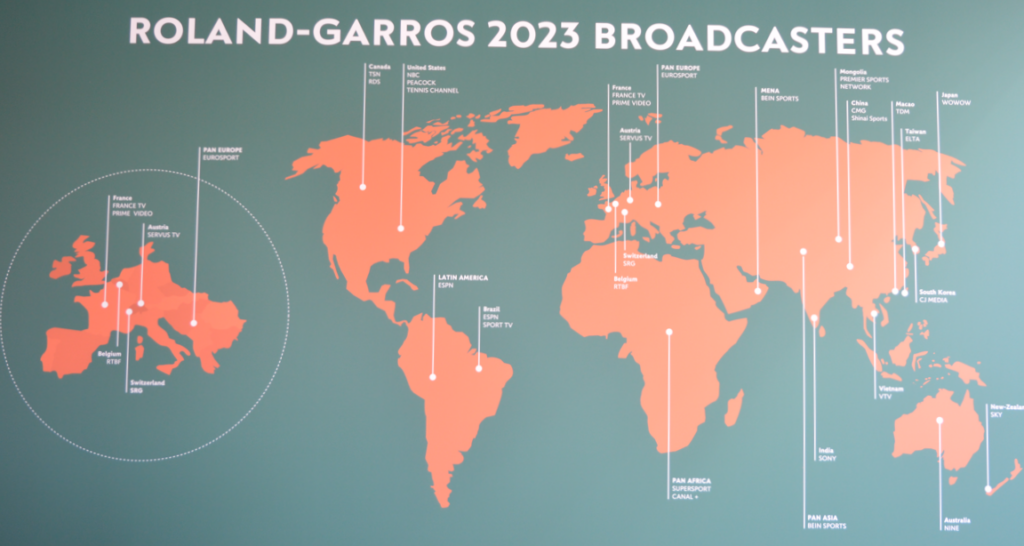
In the entrance to the television compound at Roland Garros is a map illustrating all the national broadcasters carrying the French Open – including TSN and RDS in Canada.
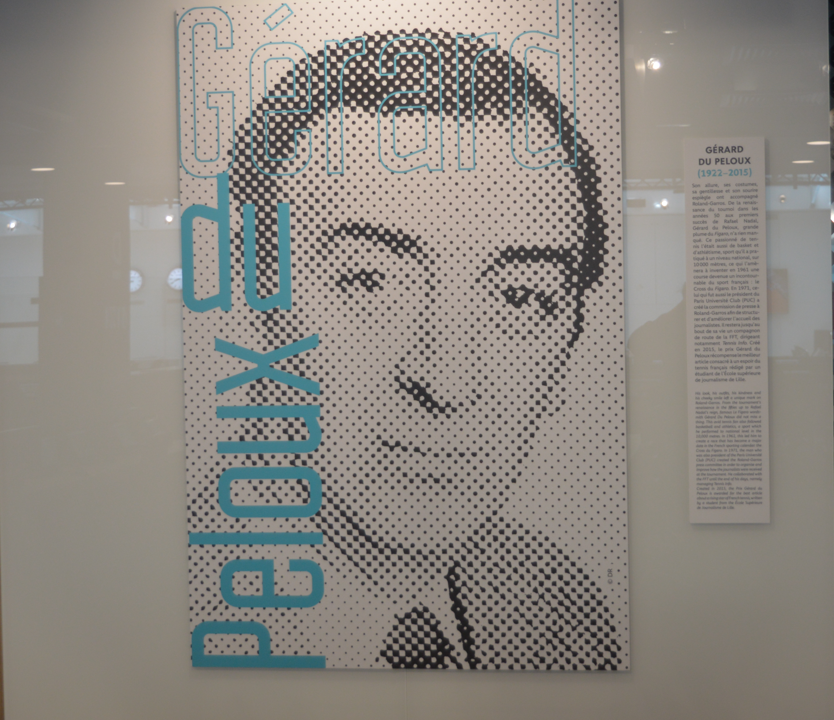
Paying homage to the late Gérard du Peloux, the long-time chargé d’affaires of the press section at Roland Garros, this portrait of the former Le Figaro journalist is now prominent in the media centre.
